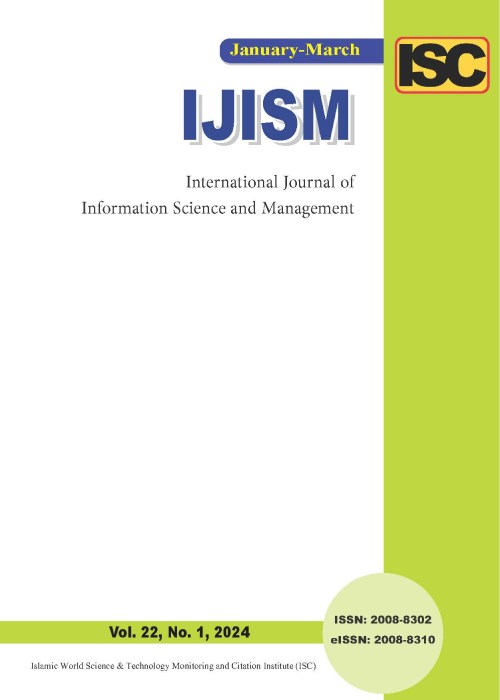فهرست مطالب
International Journal of Information Science and Management
Volume:3 Issue: 2, Jul-Dec 2005
- تاریخ انتشار: 1383/10/11
- تعداد عناوین: 6
-
Pages 1-17This study aims to describe the way in which bibliometric analysis can become a trend recognition tool. The research work shows the application of bibliometric analysis in science. Such analyses provide information about the response received by scientific publications. The paper indicates how، with the aid of a tripartite division، it becomes possible to examine the past، present and future. For the past، it is above all the scientific output that is examined، for the present the response to this output is considered، and for the future perspective future fields are defined which provide information about this aspect. Indicators are introduced for each of the above-mentioned perspectives and the way these indicators are established is explained. With respect to the perspective of future fields، this involves investigating the interdisciplinarity of scientific publications. Bibliometrics is associated with methods of information management. These methods include، for example، critical success factors for trend recognition. A workflow additionally describes in four steps the different activities necessary for achieving the goal of trend recognition. Consideration is also given to possible forms of trends and how they are to be dealt with. The study concludes that it is possible to perform trend recognition by bibliometric methods.
-
Pages 19-28Extension of information together with the need for its use in a suitable and appropriate time is one of the important goals in this century – the information century. The user query that is accessibility to the requested text information in a short time must be satisfied using effective techniques. This is performable under text compression and retrieval، which have been treated separately before. In this paper an algorithm، that considers the above two subjects as integrated (text integration)، is introduced and implemented. From this point of view، the possibility of text optimization from two aspects can be applied. This article concentrates mainly on Farsi [1] texts.
-
Pages 29-48As libraries at Ferdowsi University of Mashhad in Iran experienced the transition from traditional libraries to modern electronic libraries، knowledge management (KM) was employed as an approach in managing these libraries from 1999-2004. This approach is explained under four headings: organizational knowledge، knowledge presentation، knowledge dissemination، and knowledge application and the outcomes are described from the perspective of the development of a KM culture، organizational learning and a learning organization. The experience shows that this framework is a suitable model for practice. It also proves that although this approach is a workable approach، some administrative obstacles may prevent it from achieving the same results in all libraries.
-
Pages 57-70This research discusses the process of designing a conceptual model for a new information system، i. e. Electronic Document Management System. The new system is designed for an educational institute (ITVHE) whose managers are the research population. The research methodology is based on structured analysis and design methodology (SSADM). In the end، the new system proposed using a data flow diagram (dfd)، an entity relation diagram (erd) and functional decomposition diagram.
-
Pages 71-79The purpose of this paper is to review the real options literature, which has provided a promising area of development in the capital budgeting process of the firm, and to emphasize that employing the new theory, as part of the information system, depends heavily on the implementation of computer information systems, as Decisions Support Systems (DSSs). The paper concentrates on two important real options: to wait and to abandon. It is shown that in absence of the real option values in the capital decision making models, the outcome of such models would be misleading and would lead to wrong decisions. The paper furnishes some avenues for further research in capital budgeting employing real option literature.


